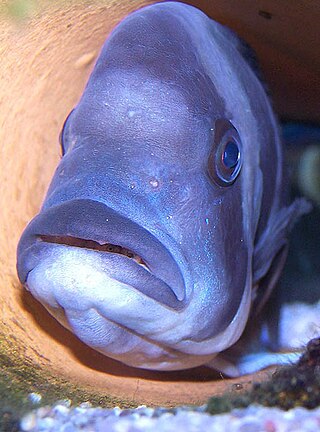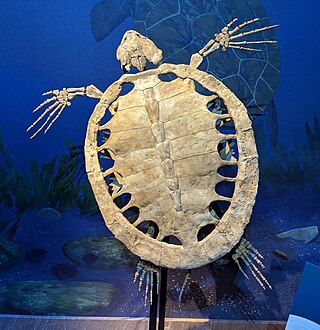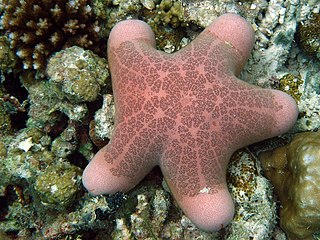
Owls are birds from the order Strigiformes, which includes over 200 species of mostly solitary and nocturnal birds of prey typified by an upright stance, a large, broad head, binocular vision, binaural hearing, sharp talons, and feathers adapted for silent flight. Exceptions include the diurnal northern hawk-owl and the gregarious burrowing owl.

Genus is a taxonomic rank above species and below family as used in the biological classification of living and fossil organisms as well as viruses. In binomial nomenclature, the genus name forms the first part of the binomial species name for each species within the genus.

In taxonomy, binomial nomenclature, also called binary nomenclature, is a formal system of naming species of living things by giving each a name composed of two parts, both of which use Latin grammatical forms, although they can be based on words from other languages. Such a name is called a binomial name, a binomen, binominal name, or a scientific name; more informally it is also historically called a Latin name. In the International Code of Zoological Nomenclature (ICZN), the system is also called binominal nomenclature, with an "n" before the "al" in "binominal", which is not a typographic error, meaning "two-name naming system".

Otters are carnivorous mammals in the subfamily Lutrinae. The 13 extant otter species are all semiaquatic, aquatic, or marine. Lutrinae is a branch of the Mustelidae family, which includes weasels, badgers, mink, and wolverines, among other animals.

In mathematics, genus has a few different, but closely related, meanings. Intuitively, the genus is the number of "holes" of a surface. A sphere has genus 0, while a torus has genus 1.

The true owls or typical owls are one of the two generally accepted families of owls, the other being the barn owls (Tytonidae). This large family comprises 230 living or recently extinct species in 24 genera. The typical owls have a cosmopolitan distribution and are found on every continent except Antarctica.
Kuehneodon is a genus of extinct mammal of the Upper Jurassic - Lower Cretaceous of Europe. It was a relatively early member of the also extinct order of Multituberculata. Members of this genus lived alongside such dinosaurs as Allosaurus. It belongs to the suborder "Plagiaulacida", family Paulchoffatiidae. In addition, this genus is the only known member of a subfamily called Kuehneodontinae. It was named by Hahn G. in 1969, the name meaning "Kühne’s tooth" in honor of paleontologist Walther Kühne, pioneer of the Guimarota site of Portugal where remains were found in the late 1950s and early 1960s.

Mouthbrooding, also known as oral incubation and buccal incubation, is the care given by some groups of animals to their offspring by holding them in the mouth of the parent for extended periods of time. Although mouthbrooding is performed by a variety of different animals, such as the Darwin's frog, fish are by far the most diverse mouthbrooders. Mouthbrooding has evolved independently in several different families of fish.

Lama is a genus containing the South American camelids: the wild guanaco and vicuña and the domesticated llama, alpaca, and the extinct chilihueque. Before the Spanish conquest of the Americas, llamas, alpacas, and chilihueques were the only domesticated ungulates of the continent. They were kept not only for their value as beasts of burden, but also for their flesh, hides, and wool.

Telmatosaurus is a genus of basal hadrosauromorph dinosaur from the Late Cretaceous of Romania. It was a relatively small hadrosaur, measuring approximately 5 m (16 ft) in length and 600 kg (1,300 lb) in body mass, which has been explained as an instance of insular dwarfism.
Taveirosaurus is a genus of possibly eutriconodontan mammal from the Late Cretaceous Argilas de Aveiro Formation of Portugal, and also Laño, Spain. The genus is based solely on teeth, and the type species is T. costai.
Rayososaurus is an extinct genus of sauropod dinosaur in the family Rebbachisauridae. Rayososaurus was named by Argentinian paleontologist José Bonaparte in 1996. Its type and only accepted species is Rayososaurus agrioensis. The species Limaysaurus tessonei was at one point included in Rayososaurus as Rayososaurus tessonei.

Clemmys is a genus of turtles currently containing a single extant species, the spotted turtle (Clemmys guttata).

The genus Planigale are small carnivorous marsupials found in Australia and New Guinea. It is the only genus in the tribe Planigalini of the subfamily Sminthopsinae. The genus has long been known to contain several cryptic species. Of the five Planigale species currently recognized, two are known species complexes.

Euclastes is an extinct genus of sea turtles that survived the Cretaceous–Paleogene mass extinction. The genus was first named by Edward Drinker Cope in 1867, and contains three species. E. hutchisoni, was named in 2003 but has since been reassigned to the genus Pacifichelys, while E. coahuilaensis named in 2009 was reassigned as Mexichelys coahuilaensis in 2010.
Microceratodus is an extinct genus of prehistoric sarcopterygians or lobe-finned fish.

Pneumatoraptor is a genus of small paravian, possibly a dromaeosaurid, dinosaur that lived in Hungary. It is known from a single complete left shoulder girdle (scapulocoracoid) found in the Csehbánya Formation of the Iharkút locality in the Bakony Mountains of western Hungary. This formation dates to the late Cretaceous period about 85 million years ago.

Angolachelys is an extinct genus of African marine turtle which existed in Angola during the Turonian stage of the Late Cretaceous. The type species is Angolachelys mbaxi. The type MGUAN-PA includes skull, jaw, and postcranial fragments found in the Tadi Beds of the Itombe Formation.

The Oreasteridae are a family of sea stars in the class Asteroidea.














